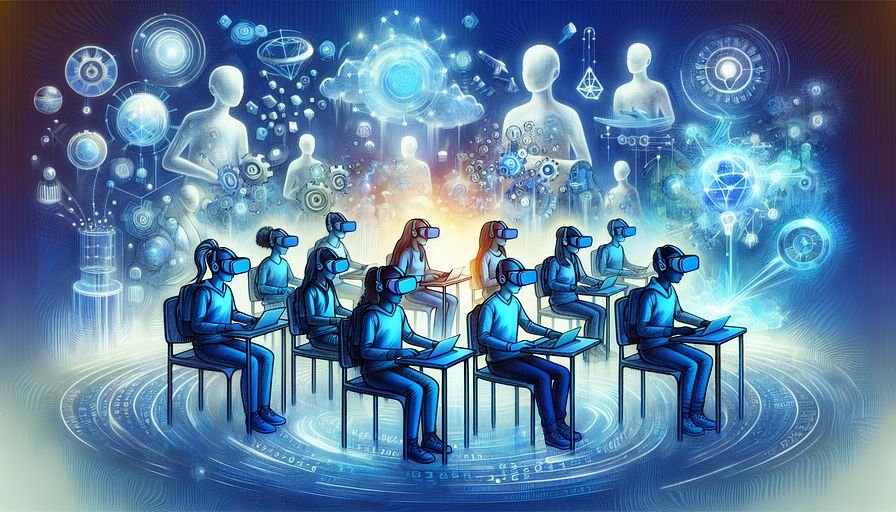Abstract:
The Chief Technology Officer observes a shift towards personalized learning in technology and engineering education. This approach tailors education to individual needs, recognizing different learning styles and empowering students. Virtual Reality (VR) education provides immersive learning experiences, helping students understand complex concepts and bridge the gap between theory and practice. The combination of personalized learning and VR education creates adaptive learning environments, offering personalized, engaging paths for students and valuable insights to educators. Technology and engineering leaders, through collaboration, play a crucial role in shaping the future of education by fostering a culture of continuous improvement and innovation.
Personalized Learning and Virtual Reality Education: A New Era for Technology and Engineering LeadershipPersonalized Learning: Tailoring Education to Individual Needs
As Chief Technology Officer, I have observed a significant shift in the way we approach education, particularly in technology and engineering. Personalized learning, which involves tailoring education to meet the unique needs, strengths, and preferences of each learner, is becoming increasingly important. This approach recognizes that students have different learning styles, paces, and backgrounds, and it empowers them to take ownership of their education. By leveraging data and technology, personalized learning can provide students with customized resources, feedback, and support, enabling them to achieve their full potential.
Virtual Reality Education: Immersive and Engaging Learning Experiences
Virtual reality (VR) education is another exciting development in technology and engineering leadership. VR offers immersive and engaging learning experiences that can help students better understand complex concepts and retain information. For instance, VR learning solutions can simulate real-world engineering scenarios, enabling students to practice their skills in a safe and controlled environment. Moreover, VR can help bridge the gap between theoretical knowledge and practical application, making learning more relevant and applicable to real-world situations. As a CTO, I believe that VR education has the potential to revolutionize the way we teach and learn technology and engineering, making it more accessible, interactive, and effective.
Adaptive Learning Environments: Combining Personalized Learning and VR Education
Adaptive learning environments represent the convergence of personalized learning and VR education. By combining data, technology, and immersive experiences, adaptive learning environments can create highly personalized and engaging learning paths for each student. As a CTO, I see great potential in this approach, as it can help students overcome learning barriers, build confidence, and develop critical thinking and problem-solving skills. Adaptive learning environments can also provide valuable insights and feedback to educators, enabling them to adjust their teaching strategies and improve student outcomes. By harnessing the power of personalized learning and VR education, adaptive learning environments can create a new paradigm for technology and engineering education, empowering students to succeed in a rapidly changing world.
Collaboration and Leadership: The Role of Directors of Technologies and Engineering
As technology and engineering leaders, Directors of Technologies and Engineering play a critical role in shaping the future of education. By collaborating with educators, policymakers, and industry partners, Directors of Technologies and Engineering can help create a shared vision for personalized learning and VR education, ensuring that students have access to the resources, tools, and support they need to succeed. This collaboration can also help identify best practices, address challenges, and create opportunities for innovation and experimentation. By fostering a culture of continuous improvement and innovation, Directors of Technologies and Engineering can help create adaptive learning environments that are responsive to the needs of students and educators.
As CTO, I believe that personalized learning and VR education are transformative forces in technology and engineering leadership. By leveraging data, technology, and immersive experiences, adaptive learning environments can create personalized and engaging learning paths for each student, empowering them to succeed in a rapidly changing world. As leaders, it is our responsibility to create a shared vision for the future of education, foster collaboration and innovation, and provide the resources and support needed to make personalized learning and VR education a reality for all students.














